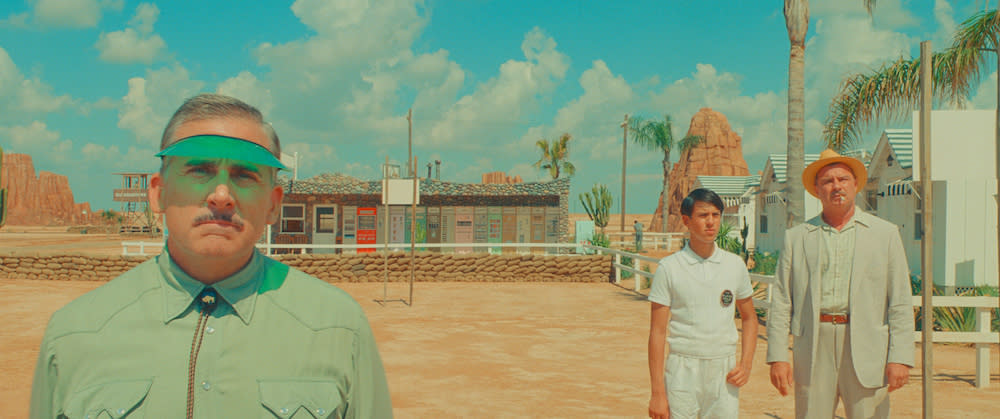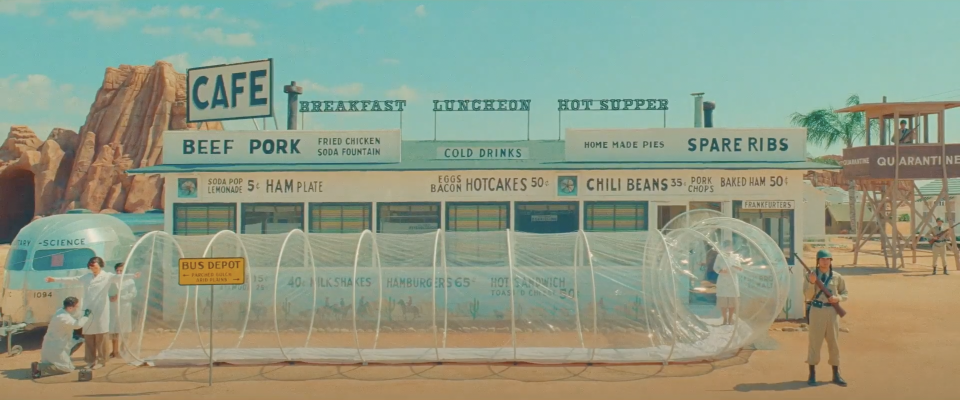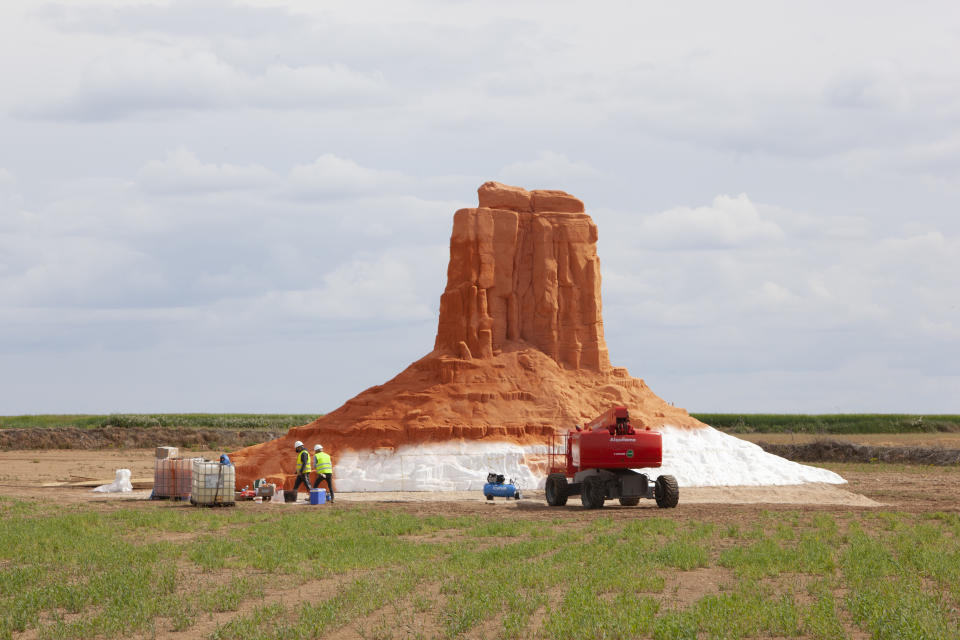‘Asteroid City’ Channeled ‘Bad Day at Black Rock’ for Its ’50s Desert Town — Down to the Tar Paper

- Oops!Something went wrong.Please try again later.
- Oops!Something went wrong.Please try again later.
- Oops!Something went wrong.Please try again later.
- Oops!Something went wrong.Please try again later.
If the eponymous mid-’50s southwestern town in Wes Anderson’s “Asteroid City” resembles the iconic “Bad Day at Black Rock” (1955), it’s no coincidence. Oscar-winning production designer Adam Stockhausen (“The Grand Budapest Hotel”) found John Sturges’ neo-Western, shot in CinemaScope on the edge of Death Valley, a valuable reference for planning the landscape for this Pirandello-like play-within-a-TV-show-within-a-movie conceit.
“Absolutely, that was an influence,” Stockhausen (“Indiana Jones and the Dial of Destiny”) told IndieWire. “We started right with the credits introduction with the moving train and then, of course, crossing with the little white sign. Generally, we were looking at ‘Black Rock’ for overall how the town’s [located] in the landscape. But also we’d go in and look at tiny details, too. How the tar paper was nailed to the roof of the gas station, and we ended up using it for the way we wrapped the tar paper around the motel cabins. Or the cafe when we took several little detailed pieces for the back counter of the luncheonette straight from there. We also looked at the rock formations when they drive out of town.
More from IndieWire
“I think it really started with how to make this town right,” he continued. “And what it means to make a town that isn’t really a town, but, rather a set of a town. Where to make this town? Do we do it at a location? Do we do it in a real desert? Do we find an empty stretch of desert with a road running down the middle of it, and build the town, but take the landscape for granted? Or does that kind of give away the feeling of it being a set and make it in a way too real?”

After scouting various locations in the U.S. and Europe, they decided to build the Astroid City town from scratch in the Spaghetti Western desert of Spain. They chose the empty, flattened farmland just beyond Chinchón, the sleepy town an hour from Madrid (where Orson Welles shot “Chimes at Midnight” and “The Immortal Story”).
The main buildings consisted of the luncheonette, the motel cabins, and the single-pump gas station. The boulders and mountains were all built behind them. The location of the buildings was crucial. “How does the motel relate to the gas station?” Stockhausen said. “Is it a 180-degree turn, is it 90 degrees? So there’s all that mechanical stuff, and then there’s the diving right into the details of what exactly each of these things looks like, and starting the process of sifting through a million interesting little bits and pieces, like the tar paper.”
With the town, Stockhausen and the art department created a handmade, cinematic version of the stage play, in keeping with Anderson’s colorful, symmetrical, diorama-like, analog style. It was shot by the director’s go-to cinematographer, Robert Yeoman, in widescreen 35mm with forced perspective to enhance the illusion. (Yeoman shot the live TV narration by Bryan Cranston and behind-the-scenes interplay in black-and-white and standard aspect ratio. These sets were built in the next town beyond Chinchón, in a former garlic warehouse.)

Meanwhile, the pastel aesthetic was influenced by both the Eastman Color look of “Black Rock” and period photography. The filmmakers wanted red for the earth and rocks and the exterior of the buildings white, which highlighted the baking yellow, mid-day sun. This, again, was inspired by “Black Rock.” “Then everything else started to fall into place,” Stockhausen said. “The wallpaper and the tile and the floor in the luncheonette. But we were doing it within the context of already kind of having a baseline of what this world looks like.”
To aid the forced perspective of this stage-like world-building, Stockhausen cheated just a little bit by lifting the horizon. “And then we have the road going back that ultimately tapers down,” he said. “And then the mountains surrounding was a big experiment to say what’s the magical point, at which our brains believe that this is full size, gigantic thing back there.”
Best of IndieWire
Where to Watch This Week's New Movies, from an Expanding 'Asteroid City' to 'No Hard Feelings'
31 Queer and Homoerotic Horror Movies, from 'Psycho' and 'Hellraiser' to 'Fear Street' and 'Titane'
Sign up for Indiewire's Newsletter. For the latest news, follow us on Facebook, Twitter, and Instagram.

